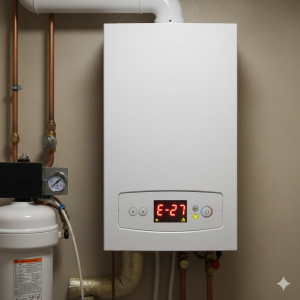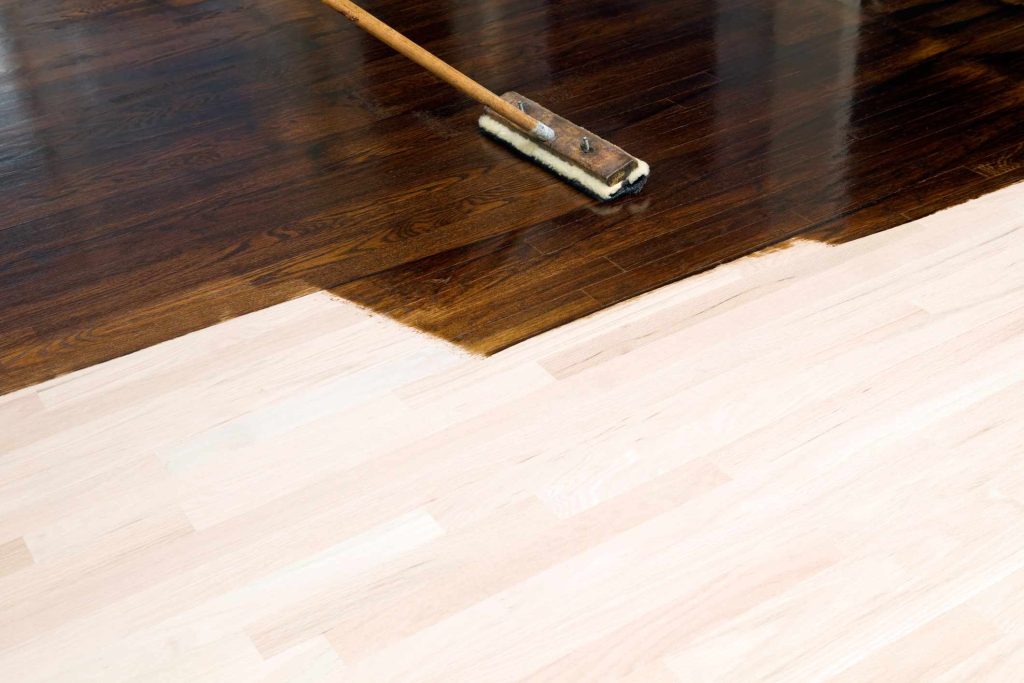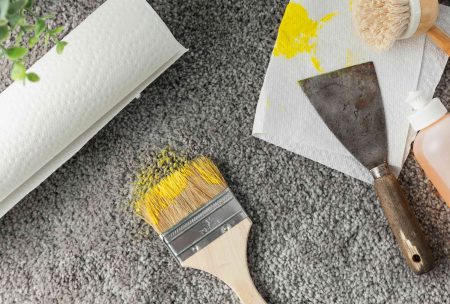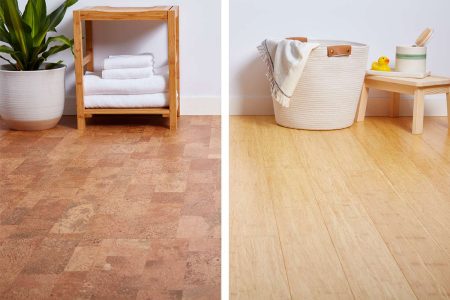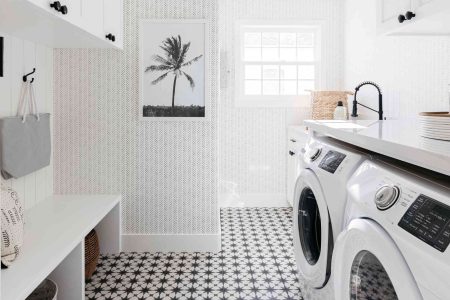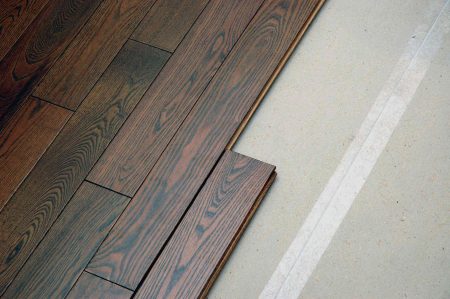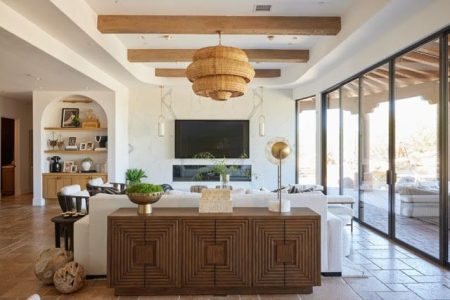Unfinished hardwood flooring has been a popular flooring option for centuries. The name, however, is both an accurate and inaccurate representation of the product and can cause confusion to someone that is unfamiliar with the material. For a more accurate representation, swap out “unfinished” with “not yet finished.” While it is true that some prefer to leave the wood unfinished after installation, standard practice is to sand, stain, and seal the wood post-installation, resulting in a finished hardwood floor.
Unfinished hardwood is so named to distinguish it from prefinished hardwood, which only arrived on the scene in the 1940s. While prefinished hardwood flooring quickly became a popular option, unfinished hardwood has remained a favorite among those who desire an authentic hardwood floor. Though there are many differences between the two materials, the biggest draw for unfinished is its real-wood look.
Unfinished vs. Prefinished Hardwood
-
Ready-to-install hardwood flooring with zero finish coat applied
-
Completely flat boards that create a flush surface once joined
-
Requires sanding, staining, and sealing after install
-
Certain finishes require a cure time before furniture can be moved in
-
Nearly endless finishing options
-
Ready-to-install hardwood flooring with factory-applied finish coat
-
Beveled edges to hide inconsistencies between boards
-
Can be used immediately after install
-
Can handle furniture immediately
-
Often includes an extensive finish warranty
Installing Hardwood Flooring
When it comes to installing hardwood flooring, there is no question that prefinished is considerably easier than unfinished hardwood. With prefinished flooring, all the installer must do is cut it to length and nail it in place. After that, the floor is ready to go. With unfinished flooring, the installation is the easy part. Once that is over, the lengthy, difficult finishing process begins. For this reason, many commercial and residential builders choose prefinished products. Homeowners also enjoy the time and money-saving quality of prefinished hardwood, though one advantage of unfinished hardwood flooring is that any scratches or damage that occur during installation can be sanded and fixed before the flooring is finished, making this flooring option slightly more forgiving.
It may come as a surprise to consumers that prefinished hardwood flooring could be cheaper than unfinished, as the square-foot price is typically higher. However, once the labor associated with finishing unfinished hardwood is accounted for, prefinished hardwood flooring is typically less than unfinished hardwood flooring.
Finishing Unfinished Hardwood
It is standard practice to apply a finish to unfinished hardwood once it is fully installed. However, there are certain applications in which designers, builders, and homeowners opt to leave the wood unfinished. With nothing to protect the wood, it is able to naturally absorb oils and whatever else life throws at it. While this can result in a nice patina, it likely will result in undesirable stains and damage. Additionally, hardwood flooring left unfinished is difficult to clean and generally high-maintenance. For these reasons, most consumers opt to finish their floors.
To finish unfinished hardwood flooring, the entire installation must be complete. Whereas prefinished flooring would be ready for move-in day at this point, there is still a time-consuming, labor-intensive process left to complete an unfinished hardwood install. This is one major reason many contractors go for the prefinished alternative.
To finish an unfinished floor, the entire surface must be sanded with progressively higher-grit paper until incredibly smooth, then a thorough cleaning is necessary to remove all dust and debris from the site. Once clean, the floor must be meticulously stained or otherwise treated until the desired color is attained, then allowed to fully dry according to the specific instructions for the colorant used. After this, the final step is to seal the floor.
There are many ways to do this, but the most popular option is polyurethane, either water-based or oil-based. Each sealing product comes with a list of advantages and disadvantages, but a somewhat lengthy curing or drying time is to be expected regardless of choice. Many products require buffing between coats, which only adds to the total time. This extra labor and time is definitely something that should be accounted for when choosing between unfinished and prefinished hardwood.
Warning
When staining and sealing hardwood floors, it is incredibly important to take proper safety measures. The chemicals used in this process are dangerous to inhale and a mask rated for these fumes should always be worn. Even after installation, many finishes will continue to release fumes until fully cured.
Concerns to Consider
If you plan to install and finish unfinished hardwood yourself, make sure you know what you are getting into. Find the best wood variety for your application and desired aesthetic before you buy, because refinishing is even harder than finishing the first time. For example, red oak will look very different than white oak, even though they are both oak flooring, and each variety will accept stain very differently. It is important to do your research before you begin: The finishing process is not for the faint of heart. It is labor-intensive, time-consuming, and getting a good finish is surprisingly difficult, even for experienced DIY enthusiasts.
Which Hardwood Option Is Best?
If saving money and time is your main objective, it is safe to say that prefinished hardwood flooring is a solid option for you. Plus, high-quality prefinished hardwood flooring is still a premium product with an incredibly durable finish, though it should be noted that the quality standard associated with solid prefinished hardwood is not the same for engineered varieties.
What Is Engineered Hardwood?
Engineered hardwood flooring is flooring that features a hardwood top layer and a bottom layer consisting of plywood. It has the look of a solid floor but does not come with the same durability and refinishing potential, though it is often more affordable.
That said, the look of unfinished hardwood that has been professionally sanded, stained, and sealed by a flooring specialist is second to none. Prefinished hardwood cannot compete with the finishing potential, the authentic look, and the smoothness of the flush joints between each board. Unfinished hardwood flooring has stuck around this long for a reason.
Read the full article here
